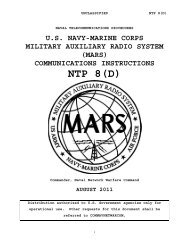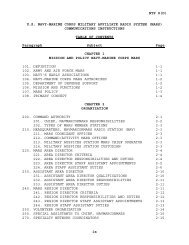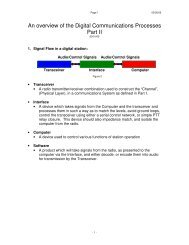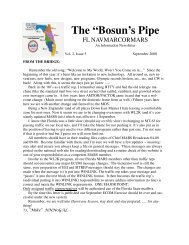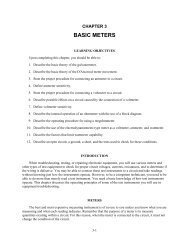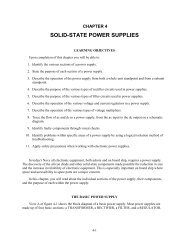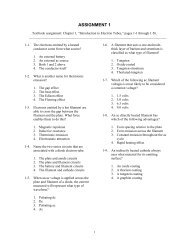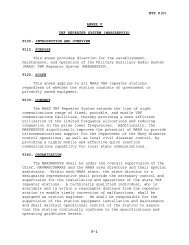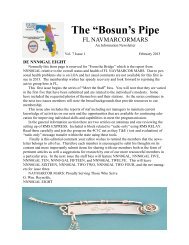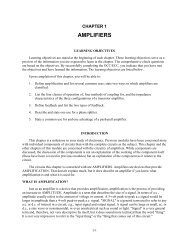Create successful ePaper yourself
Turn your PDF publications into a flip-book with our unique Google optimized e-Paper software.
The plate voltage-plate current characteristic for a given diode is a measure of exactly how much platevoltage controls how much plate current. This is often called the E p - I p characteristic.The E p - I p characteristic for a given diode, is determined by design engineers using mathematicalanalysis and laboratory experiment. You, as a technician, will never need to do this. However, you willuse the results obtained by the engineers. You will also use your knowledge of the diode as you analyzeequipment malfunction.Assume that we have the circuit in figure 1-12. (The filament has the proper voltage-even though itisn't shown on the diagram.) Our purpose is to determine just how a changing voltage on the platechanges (or controls) the plate current. The method is as follows:Figure 1-12.—Determining diode plate characteristic.1. Starting with zero volts from our variable dc voltage source, increase the plate voltage (E p ) insteps of 50 volts until you reach 400 volts.2. At a each 50-volt step, measure the milliamperes of plate current (I p ) that flow through the meter.Record the I p meter readings, step by step, so that you may analyze the results.Assume that table 1-2 shows our results. While we could use the table, a more normal procedure is toplot a graph of the values. Such a graph is called an E p - I p CURVE and is shown in figure 1-13. Eachtube has its own E p - I p curve, which is available in commercial tube manuals and in many equipmenttechnical manuals. Each curve will be different in some respects from every other curve. The shapes,however, will be similar.Table 1-2.—E p - I p Values Obtained by ExperimentE p 0 50 100 150 200 250 300 350 400I p 0 .002 .005 .010 .020 .030 .040 .042 .0451-14




